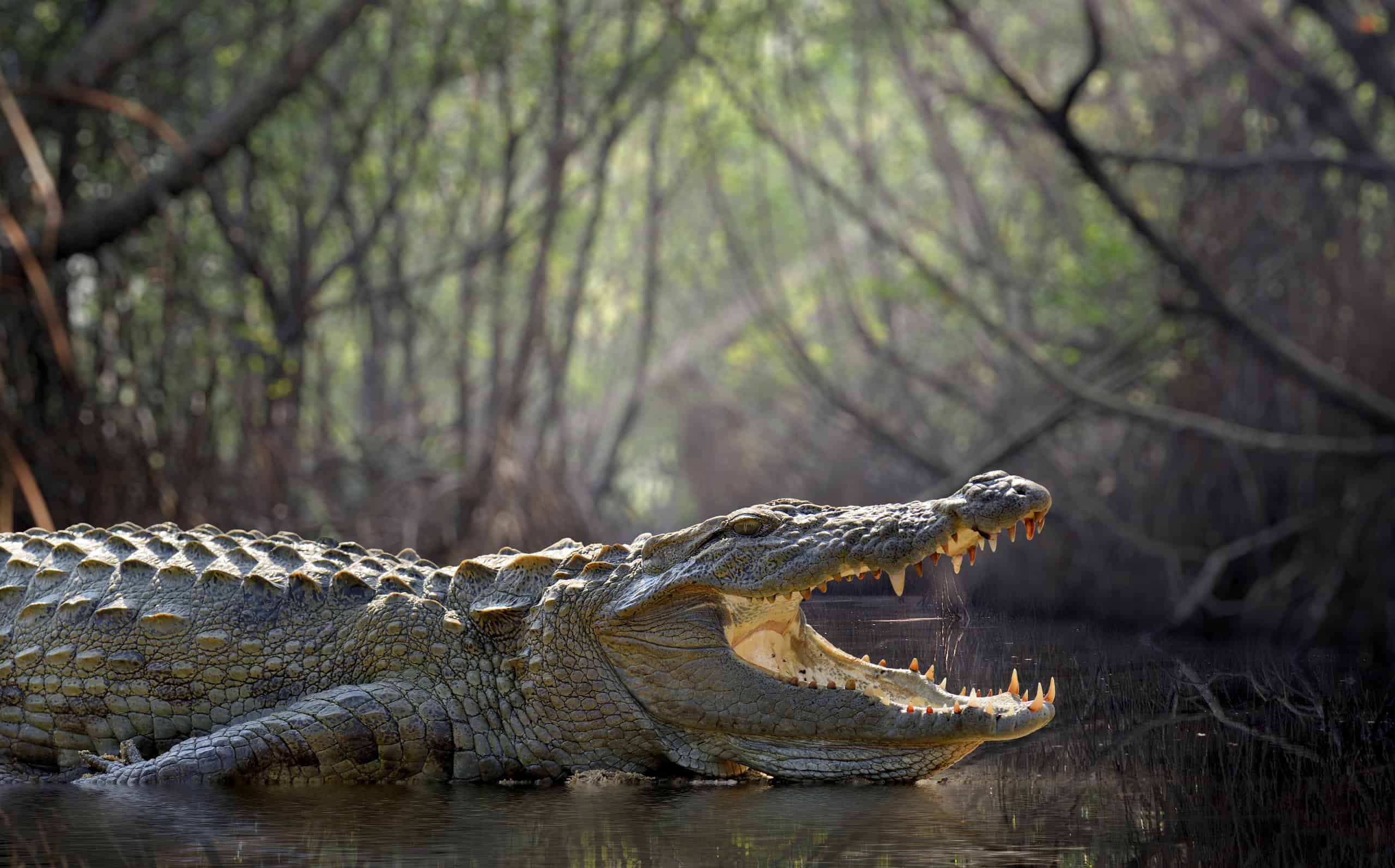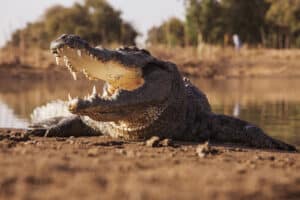Continue reading for our analysis...

Not everyone can handle the brutality of nature and safari rides are not for the weak. In the video below, a family on safari watches one of the most harrowing aspects of wildlife as nature takes its course.
What Animals Prey On Wildebeests?
Wildebeests are preyed upon by several different animals that consider them a reliable food source. In the African savannah, cheetahs and lions go after these large animals as well as hyenas and wild dogs. Aside from these carnivorous land mammals, there is also a semiaquatic predator that takes the opportunity to attack a wildebeest whenever possible — the crocodile.
Wildebeests, unlike their predators, don’t feast on flesh. Their diets consist of leaves and grasses. These herbivores travel in herds, relying on their strength in numbers and their speed (up to 50 miles per hour) to escape their predators. Although larger than their predators, they don’t have many defenses when taken down. Their best chance at survival is to flee the threat.

A huge crocodile grabs hold of a wildebeest’s leg in the water to incapacitate it, kill it, and eat it.
©iStock.com/USO
How Big Do Crocodiles Get?
The size of a crocodile depends on its gender. Female Crocs don’t grow as big as their male counterparts, usually between eight and 12 feet long. Males can reach up to 20 feet long but out in the wild, they rarely surpass 14 feet. Not only is their length intimidating, but their weight makes them even more massive. Larger crocodiles can grow to weigh over 2,000 pounds!
Wildebeest vs. Croc vs. Bigger Croc

Crocodiles consume a variety of food such as fish, birds, crustaceans, and small mammals, and in certain nations, they may also prey on zebras and wildebeests.
©Naypong Studio/Shutterstock.com
In the video below, a herd of wildebeests has stopped at a watering hole to hydrate. Several are at the edge of the water drinking up while others wait in the brush. A few of the wildebeests startle at one point, spotting something that isn’t clear until a few moments later. One wildebeest manages to escape the danger but the one closest to the water is snatched by a croc. The crocodile grabs hold of the horn on the right side of its head and powerfully pulls it into the water.
The wildebeest immediately starts bellowing, using all its might to try and get away. Despite its attempts to fight off the croc, it just gets deeper into the center of the watering hole. You can hear the sputtering clicks of cameras in the background while the shocked spectators root for the wildebeest. However, it’s a losing battle. The wildebeest manages to break its horn free, but the croc is fast and immediately grabs hold of its leg. The wildebeest tries to get to the edge of the watering hole as a spectator in the background is heard crying.
The wildebeest limps toward the edge, the croc attached to its leg. As if the scene weren’t intense enough for the spectators, a much bigger croc swims up to the already injured wildebeest, snaps its jaws onto its body, and immediately takes it underwater to drown it. The child in the background learned a tough lesson that day but at least the scene unfolded quickly.
Thank you for reading! Have some feedback for us? Contact the AZ Animals editorial team.







